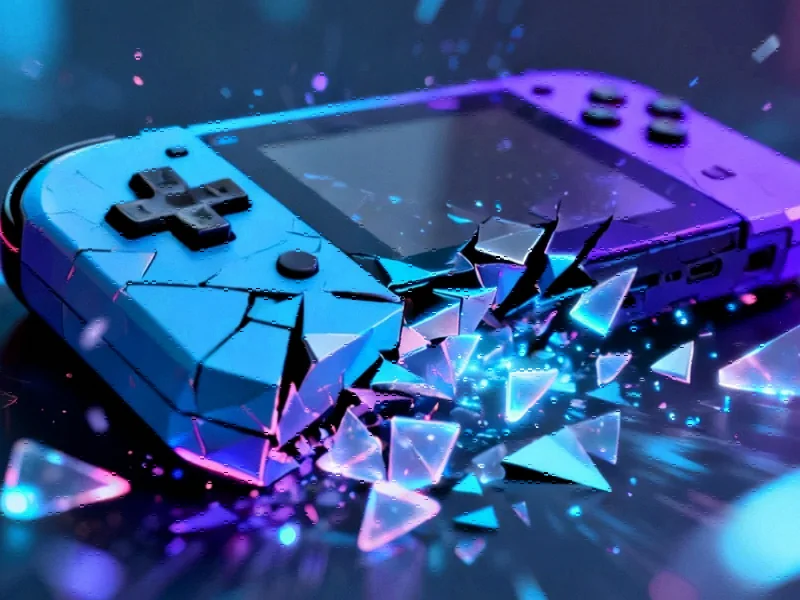Xbox’s Evolving Hardware Strategy Creates Confusion
Microsoft’s Xbox brand is experiencing what analysts suggest amounts to a full-blown identity crisis as the company expands into PC-like handheld devices while maintaining traditional console offerings. According to reports from Variety’s recent interview with Xbox President Sarah Bond, the company is actively “re-contextualizing” what the Xbox brand represents to gamers amid shifting hardware strategies.
High-Cost Handhelds and Pricing Concerns
The $1,000 Asus ROG Xbox Ally X has emerged as a focal point in the debate around Xbox’s direction. Sources indicate that PC manufacturers like Asus and Lenovo face different economic pressures than Microsoft, unable to subsidize hardware to the same extent due to international trade complications and tariffs. This comes as Microsoft has implemented multiple price increases, boosting the five-year-old Xbox Series X by $150 and raising Game Pass Ultimate from $20 to $30 monthly.
The report states that these pricing decisions create additional pressure on the handheld game console market, where the ROG Xbox Ally devices compete against more affordable options like the rumored $450 Switch 2. Meanwhile, the broader personal computer industry continues to navigate emerging technology integrations and sector-specific challenges.
Technical Identity Crisis
The fundamental challenge, according to the analysis, lies in the hybrid nature of the new Xbox hardware. The ROG Xbox Ally runs a customized Windows interface with what Microsoft calls a “full screen experience,” allowing controller navigation while maintaining access to the Xbox app and other PC game launchers like Steam. However, the report states that the device still exhibits PC-like behaviors that may confuse traditional console gamers, including pre-installed Microsoft applications like OneDrive and Teams.
Seamus Blackley, often credited as the father of the original Xbox console, recently questioned the approach on Bluesky, asking whether the device is “actually just a branded laptop with joysticks.” This sentiment reflects broader confusion about whether Xbox is primarily a console brand or expanding into the PC gaming space.
Next-Generation Hardware and AI Integration
Looking toward the future, sources indicate that the next-generation Xbox will likely utilize AMD RDNA 5 microarchitecture. The significant advancement beyond raw performance improvements reportedly involves broader access to AMD’s FidelityFX AI upscaling technology, which uses artificial intelligence to enhance lower-resolution frames while maintaining performance. This approach mirrors industry trends toward AI-powered solutions across multiple sectors.
The technological landscape continues to evolve rapidly, with infrastructure resilience becoming increasingly important for gaming platforms. Meanwhile, space industry developments demonstrate how technological partnerships can drive innovation in unexpected ways.
Game Library Strength Amid Hardware Uncertainty
Despite hardware confusion, Xbox maintains a strong upcoming game lineup that includes Ninja Gaiden 4, Obsidian’s The Outer Worlds 2, and Double Fine’s Keeper. According to reports, these titles weren’t specifically designed for the Xbox Ally X but remain playable on the handheld with adjusted graphics settings. This contrasts with traditional console approaches where developers optimize specifically for hardware limitations, as demonstrated by well-tuned Switch 2 ports of demanding games like Cyberpunk 2077.
Bond has characterized the Xbox Ally as an “opportunity to innovate in a new way” and provide gamers with additional choices alongside next-generation hardware. However, with the next Xbox console potentially not arriving until 2027, the company faces the challenge of maintaining gamer engagement through a period of significant transition and industry transformation.
Market Positioning Challenges
The fundamental question facing Microsoft is how to position Xbox in a rapidly changing gaming landscape. Analysts suggest that the company must clearly communicate why its hardware strategy matters to gamers who are increasingly sensitive to costs and confused by the blurring lines between consoles and PCs. With the handheld market expanding and traditional console generations lengthening, Microsoft’s ability to articulate a coherent vision for Xbox’s future may determine its position in the next era of gaming, particularly as the industry watches high-stakes technological competitions unfold in other sectors.
This article aggregates information from publicly available sources. All trademarks and copyrights belong to their respective owners.
Note: Featured image is for illustrative purposes only and does not represent any specific product, service, or entity mentioned in this article.



